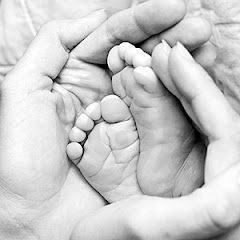Nail Care
Monday, October 12, 2009
Why do bunions develop?
Bunions develop from a weakness in the bone structure of your foot. There is a strong possibility that heredity is the underlying cause. As a result, the joints have a tendency to move out of proper alignment given the instability of the bones and ligaments that form the various joints and arches in your feet. Podiatrists will sometimes see the development of bunion deformities even in young children. The bunions are not caused by improper shoegear but are significantly aggravated by improperly fitting shoes that place an unusual degree of pressure at the bunion joint.
As bunions become more severe, the joint moves out of proper alignment and eventually arthritis damages the joint space. The large toe will move sideways towards the second toes, and the foot tends to widen across the metatarsal area. This is a mechanical consequence not usually caused by shoegear. However, shoesgear can certainly aggravate the condition and speed up the development of a more serious and significant deformity.
Some Facts You Should Know About Bunions
A large percentage of the population is likely to develop bunions, although it appears that bunions are more commonly seen on women's feet. A bunion is a swelling or enlargement of the large toe joint on the inner side of the foot. The deformity usually develops gradually and will cause pain for shoes rubbing against the enlarged bone. There may be swelling, redness and deep arching pain associated with bunion joint, causing a bursitis.
Concluding Thoughts
It is always important to carefully follow your doctor's instructions. Be sure to ask your podiatrist any questions you have before or after surgery.
Your podiatrist will direct your postoperative management and will advise you of the type of shoes to wear at the conclusion of your postoperative period.
There may be additional methods of treatment for this common foot problem. Your doctor will discuss this with you. Complete cooperation between you and your doctor is essential for a satisfactory result.
Your podiatrist will direct your postoperative management and will advise you of the type of shoes to wear at the conclusion of your postoperative period.
There may be additional methods of treatment for this common foot problem. Your doctor will discuss this with you. Complete cooperation between you and your doctor is essential for a satisfactory result.
Surgical Treatment
The following are examples of the different types of metatarsal surgical procedures known as osteotomies or surgical fractures of the bone(s). These procedures are necessary to reposition a depressed or abnormally long metatarsal that could be the cause of your problem.
Treatment for Metatarsalgia
Treatment is based on a thorough history and examination of the foot and lower extremity. Further determination into the cause may require gait analysis, X-rays, advanced imaging studies and possibly blood work. Once the underlying cause has been determined, then your podiatrist can direct treatment to address the problem.
Calluses may need debridement. Warts may need to be removed. Functional or biomechanical causes may be controlled with the use of an orthotic. Orthotics could be prescribed to reduce motion and shearing forces across the ball of the foot.
In case where deformity and loss of fat pad occur, there can be relief of symptoms with the use of customized shoe-gear in combination with orthothics.
Structural causes mentioned involving a long or depressed central metatarsal could respond to off-loading or could require surgery to decrease the pressure on the forefoot. Orthotic devices are used to try and rebalance and off-load these areas of the forefoot. When that fails to relieve symptoms, surgery will sometimes become necessary.
Monday, September 21, 2009
Forefoot Pain
Painful conditions can occur in this area separately or in combination at the metatarsophalageal joint intersection. Common causes of pain in this region of the forefoot include:
Calluses, which either spread out over a broad area or are isolated beneath a single metatarsal head. Calluses may have structural or functional causes.
Some structural causes could be:
- Enlarged Metatarsal Head
- Depressed Metatarsal (a bone that sits lower than the others)
- Abnormally long metatarsal
- Abnormal Sesamoid Bone
- Foreign Bodies embedded in the foot
- Degenerative changes to the joints from inflammation or Arthritis
Some Functional causes could be:
- Abnormal biomechanical function of the foot. These abnormalities include:flatfeet, high- arched feet and contracted toes. Each entity will produce specific callus patterns on the ball of the foot.
- Loss or thinning of the fat pad naturally occurs with age. Atrophy of the fat pad can be accelerated by diseases such as Rheumatoid Arthritis. Thinning of the fat pad is also common in postmenopausal women.
- Displacement of the fat pad exposes the metatarsal heads to abnormal pressure. Displacement occurs mostly with people who have unnaturally high-arched feet or with individuals heavily involved in sport activities over a long period of time, when there is continuous strain on the ball of the foot( i.e; jogging, basketball, tennis, and volleyball).
Other causes of forefoot pain include:
- Rheumatoid Arthritis or Osteoarthritis
- Bursitis with or without associated calluses
- Warts, which commonly resemble calluses or corns
- Foreign bodies, such as splinters, glass or embedded hairs
- Neuroma or Neuritis, a condition or small nerves in between the metatarsals
- Tendonitis
- Cysts
- Diabetes with neuropathy - causing burning pain or pins-and-needles tingling sensation
- Trauma/Stress Fractures
Subscribe to:
Comments (Atom)


